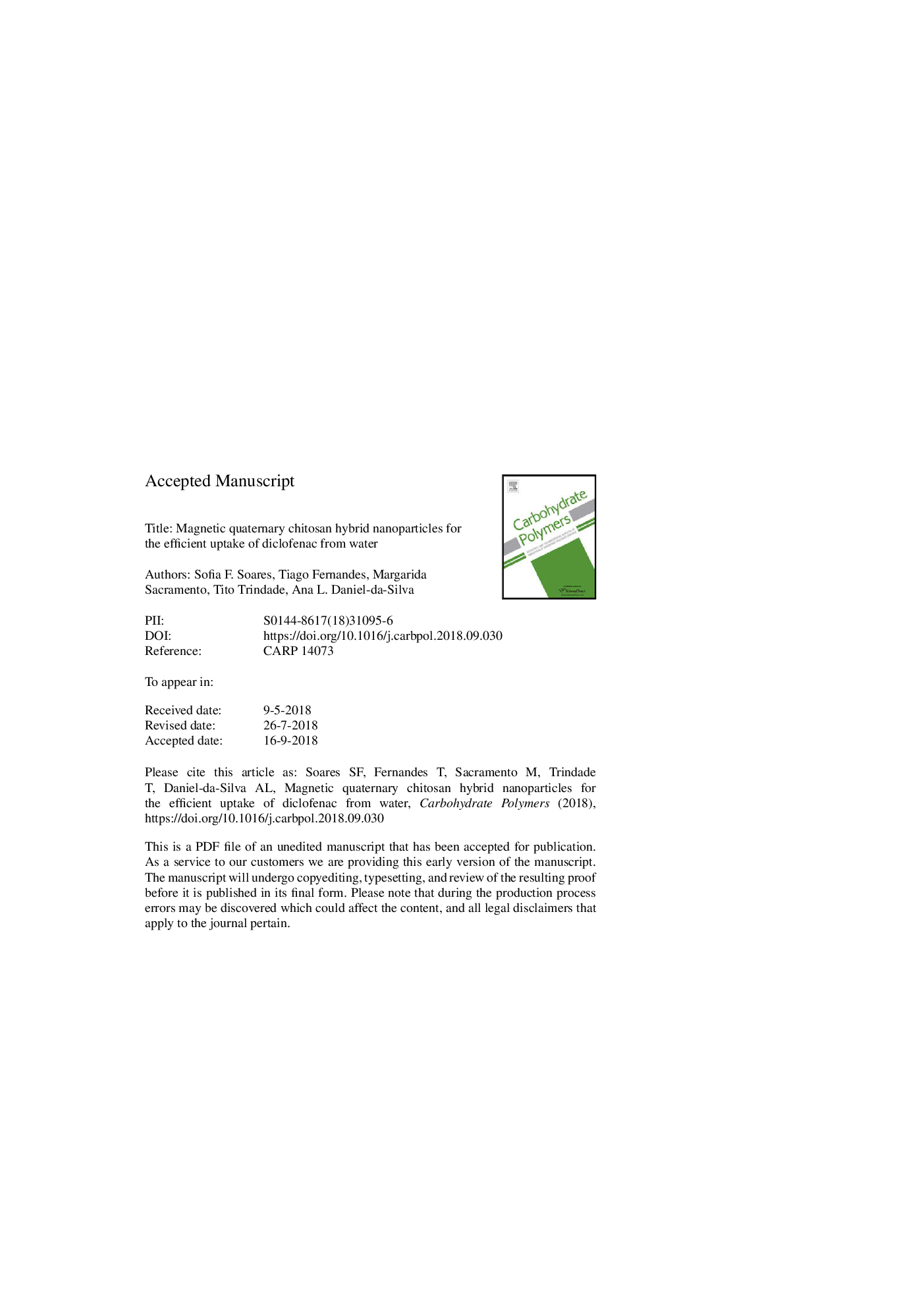| Article ID | Journal | Published Year | Pages | File Type |
|---|---|---|---|---|
| 10154860 | Carbohydrate Polymers | 2019 | 36 Pages |
Abstract
The occurrence of pharmaceuticals in the environment and the water cycle, even at trace levels, has been a matter of great discussion in the literature in the recent years. Despite the clinical relevance of diclofenac (DCF), several studies indicate that it is one of the most frequently detected anti-inflammatory drugs in surface waters, with potential harmful impact on environment and human health. Herein, novel magnetic hybrid nanosorbents composed of magnetite cores encapsulated within a siliceous network highly enriched in a quaternary chitosan (HTCC) were successfully prepared and tested in magnetically assisted removal of sodium diclofenac from aqueous solutions. The DCF adsorption by the produced core-shell nanoparticles was assessed based on several experimental parameters. It was found that under optimal conditions, the modelling of the equilibrium data was best fit with Langmuir and Toth models where the maximum adsorption capacity of DCF was 240.4âmg/g. These results indicate that these hybrid biosorbents are among the most effective magnetic systems for the removal of this pharmaceutical from water. Through the strategy proposed in this work, novel hybrid magnetic nanoparticles containing a cationic surface charge in a broad pH range, from acidic to neutral pH values, is reported. Therefore, these materials may provide a new way of removing a wider class of other anionic contaminants from water.
Related Topics
Physical Sciences and Engineering
Chemistry
Organic Chemistry
Authors
Sofia F. Soares, Tiago Fernandes, Margarida Sacramento, Tito Trindade, Ana L. Daniel-da-Silva,
